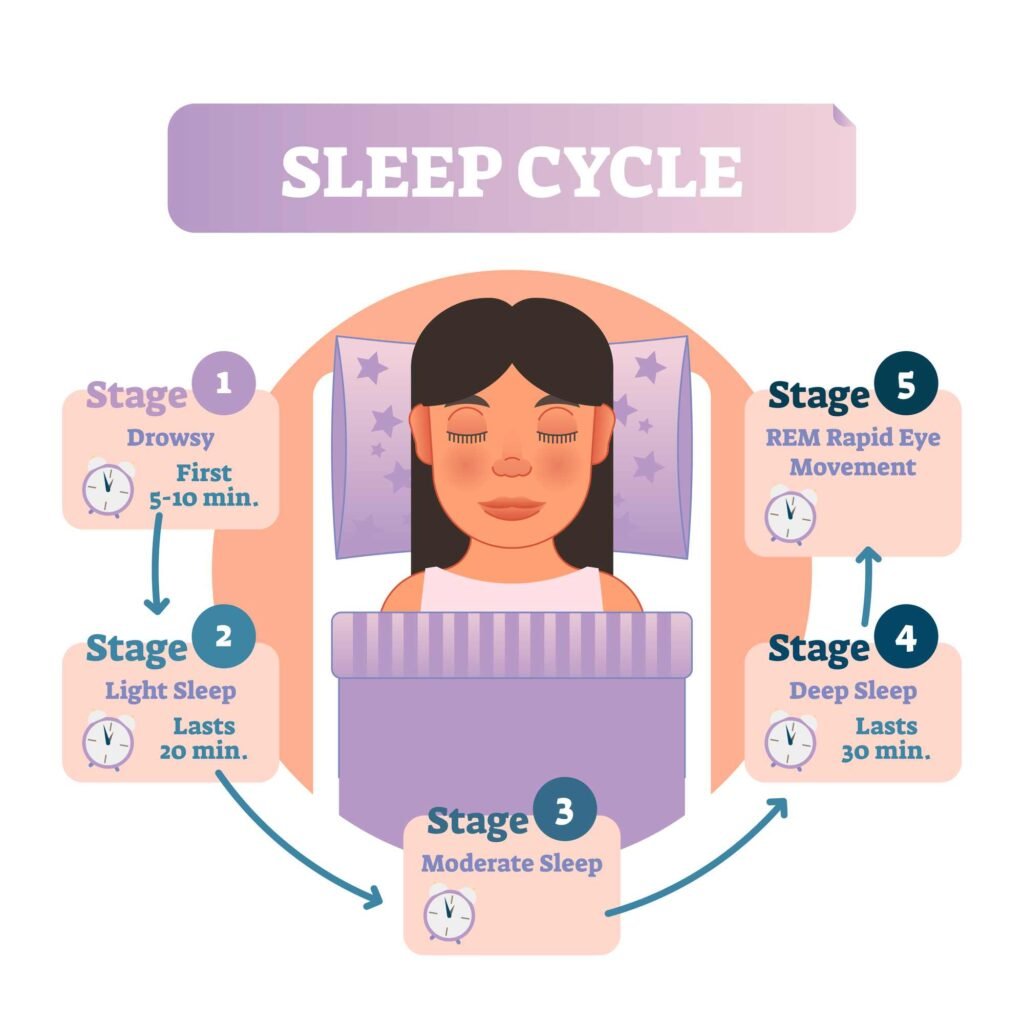Sleep spindles are a type of brain activity that occurs during non-REM sleep, specifically during stage 2 sleep.
Sleep spindles are characterized by bursts of brain waves that have a frequency of 11-16 Hz and last for approximately 0.5 to 2 seconds. Sleep spindles were first discovered in the 1930s by researchers who were studying the brain waves of sleeping individuals using electroencephalography (EEG).
Sleep spindles are a crucial component of sleep architecture and are believed to play a role in consolidating memory and learning. Studies have shown that individuals who have more sleep spindles tend to perform better on memory tasks and have better overall cognitive function.
Additionally, sleep spindles have been linked to the activity of the thalamus, a part of the brain that plays a role in sensory processing and regulation of consciousness. Further research is needed to fully understand the function of sleep spindles and their role in overall brain function during sleep.

Physiological Basis of Sleep Spindles
Generation and Characteristics
Sleep spindles are a type of brainwave that occurs during non-rapid eye movement (NREM) sleep, specifically in stage 2 sleep. They are characterized by a burst of brain activity in the thalamus and cerebral cortex, which is visible on an electroencephalography (EEG) as a distinctive spindle-shaped waveform.
The generation of sleep spindles is thought to be due to the interaction between the thalamus and the cortex. The thalamus sends information to the cortex, which then processes it and sends it back to the thalamus. The thalamic reticular nucleus plays a key role in regulating this interaction, inhibiting certain signals and allowing others to pass through.
Sleep spindles can be further divided into two categories: slow spindles and fast spindles. Slow spindles have a frequency of around 11 Hz, while fast spindles have a frequency of around 13-15 Hz.
Role in Sleep Stages
Sleep spindles play an important role in sleep architecture, which refers to the organization of different stages of sleep throughout the night. During NREM sleep, sleep spindles are thought to help maintain a stable sleep state and protect against external stimuli that could disrupt sleep.
In addition, sleep spindles have been linked to memory consolidation, with studies showing that individuals with more frequent and longer sleep spindles have better memory retention.
Overall, sleep spindles are a fascinating aspect of brain activity during sleep, and further research is needed to fully understand their physiological basis and role in sleep and memory.
Sleep Spindles and Cognitive Functions
Memory and Learning
Sleep spindles have been found to play a crucial role in memory consolidation and learning. Studies have shown that the number and duration of sleep spindles are positively correlated with memory consolidation, particularly in the declarative memory consolidation process. Declarative memory consolidation refers to the process of converting short-term memories into long-term memories.
Moreover, sleep spindles have been found to be involved in the consolidation of motor memory, which is the process of integrating motor skills into long-term memory. This is essential for learning new motor skills, such as playing an instrument or mastering a sport.
Neurological and Psychiatric Implications
Sleep spindles have also been linked to neurological and psychiatric disorders. For instance, studies have shown that individuals with schizophrenia have fewer and shorter sleep spindles compared to healthy individuals. This suggests that sleep spindle abnormalities may play a role in the cognitive deficits associated with schizophrenia.
Furthermore, sleep spindle activity has been found to decline with age, which may contribute to age-related cognitive decline. Additionally, sleep spindle abnormalities have been observed in individuals with epilepsy, which may be related to the cognitive impairments associated with this disorder.
Research has also suggested that sleep spindle activity may serve as a biomarker for certain mental health issues, such as anxiety and depression. Moreover, sleep spindle activity has been found to be associated with the amygdala, a brain region involved in emotional processing. This suggests that sleep spindles may play a role in emotional regulation.
In conclusion, sleep spindles play a critical role in cognitive functions such as memory consolidation and learning. Sleep spindle abnormalities have been linked to various neurological and psychiatric disorders, highlighting their importance in brain function and mental health.
Frequently Asked Questions
What is the function of sleep spindles?
Sleep spindles are brief bursts of brain activity that occur during stage 2 of non-rapid eye movement (NREM) sleep. While the exact function of sleep spindles is not fully understood, research suggests they may play a role in memory consolidation, sensory processing, and protection of sleep.
How are sleep spindles represented on an EEG?
Sleep spindles are represented on an electroencephalogram (EEG) as short bursts of brain activity with a characteristic frequency of 11-16 Hz. They typically last between 0.5 and 2 seconds and occur in clusters.
What stage of sleep are sleep spindles most commonly associated with?
Sleep spindles are most commonly associated with stage 2 of NREM sleep, which typically occurs after a period of light sleep.
What do sleep spindles indicate about sleep quality or brain activity?
Research suggests that sleep spindles may be an indicator of sleep quality and brain activity. Higher frequency and density of sleep spindles have been associated with improved memory consolidation and cognitive function.
At what developmental stage do sleep spindles first occur?
Sleep spindles first occur during infancy, around 3-6 months of age, and continue throughout the lifespan.
How might one naturally increase the occurrence of sleep spindles?
While there is no guaranteed way to increase the occurrence of sleep spindles, research suggests that regular exercise, maintaining a consistent sleep schedule, and avoiding alcohol and caffeine before bedtime may promote healthy sleep and increase the frequency and density of sleep spindles.

K-Complexes: Understanding Their Role in Sleep and Memory Consolidation

K-complexes are thought to play a role in sleep architecture by regulating cortical arousal and maintaining sleep stability. They are often observed in response to external stimuli such as noise, but can also occur spontaneously.
K-complexes are typically accompanied by a decrease in muscle tone and heart rate, and are often followed by sleep spindles, which are brief bursts of oscillatory activity in the EEG.
Continue reading about: K-complexes
Reclaiming Deep Restful Sleep: The Magnesium Deficiency Solution

Magnesium’s essential role in regulating stress and anxiety levels is fundamental to understanding its influence on sleep quality. It is involved in over 300 biochemical reactions in the body, including those that control the relaxation of the nervous system and induce sleep.
Continue reading: The Magnesium Deficiency Solution



